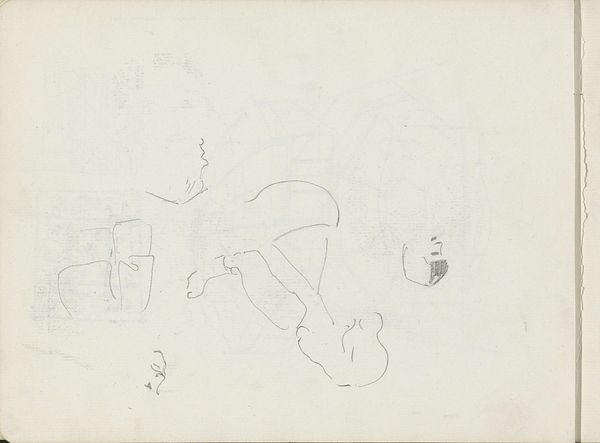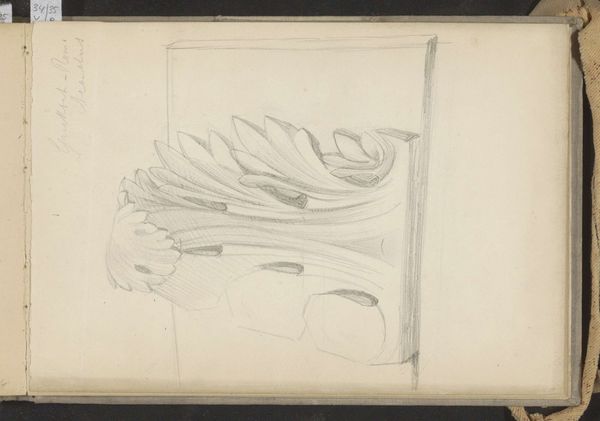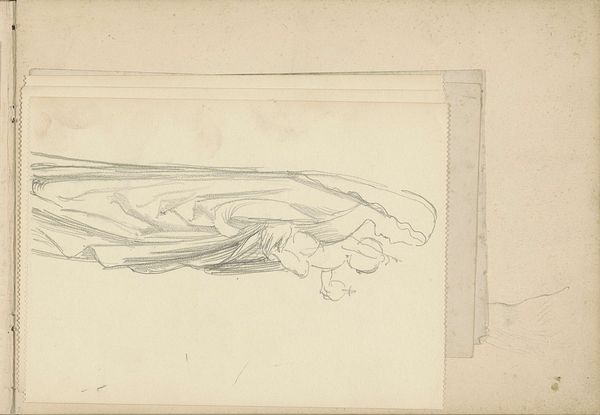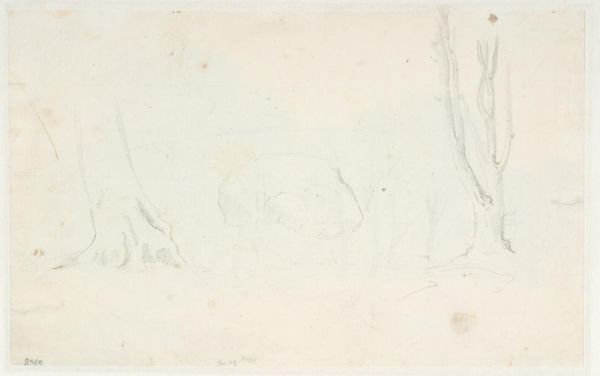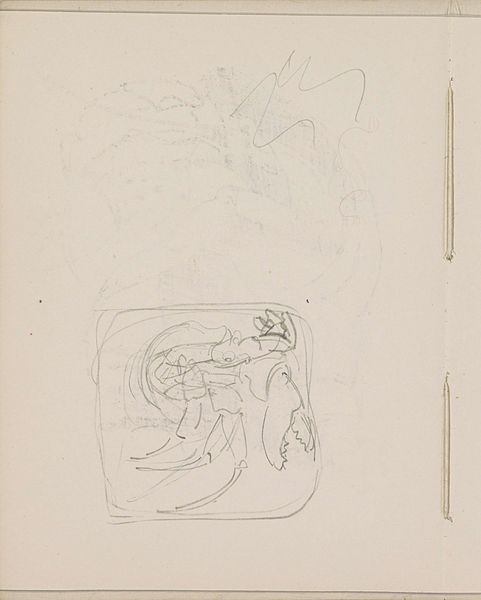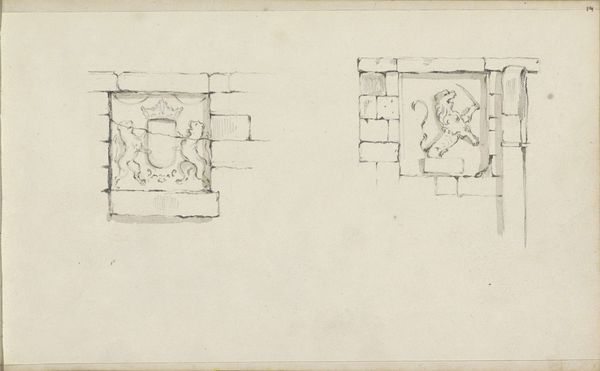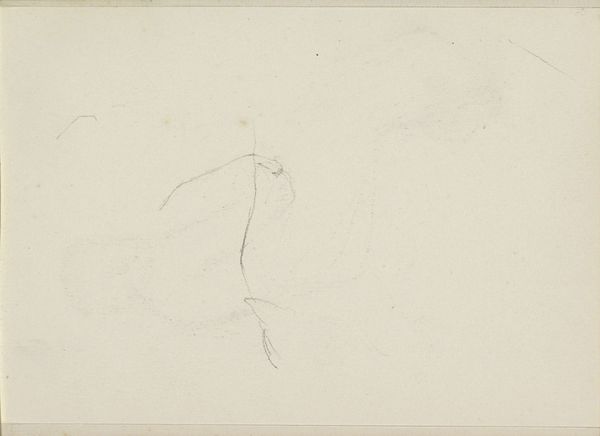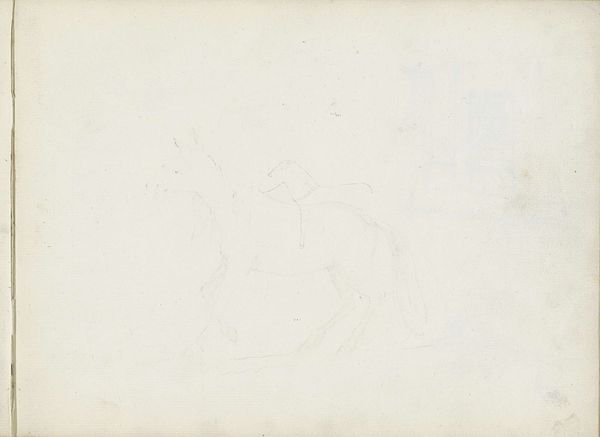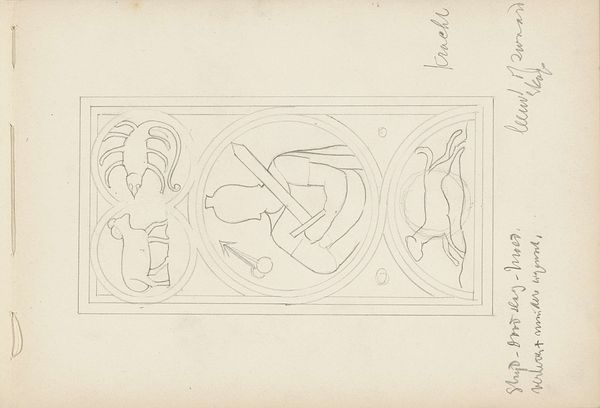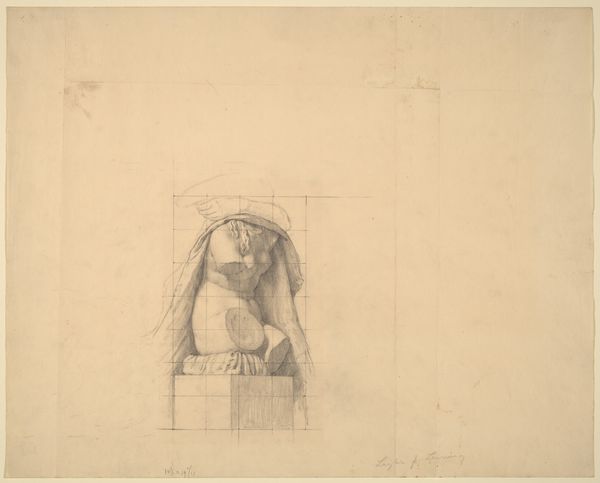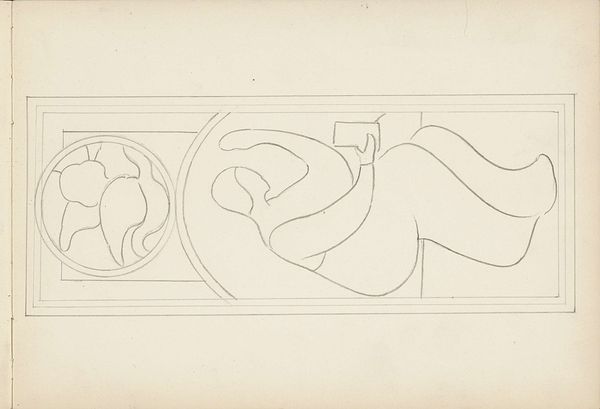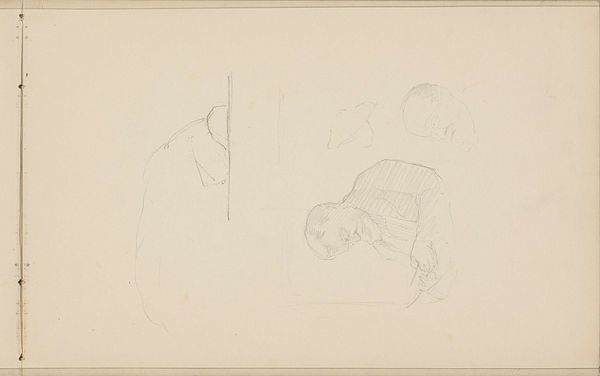
drawing, pencil
#
drawing
#
art-nouveau
#
pencil sketch
#
figuration
#
pencil
Copyright: Rijks Museum: Open Domain
Editor: This is "Ornament met een zeemeermin," or "Ornament with a Mermaid," a pencil drawing by Carel Adolph Lion Cachet, dating from around 1905 to 1910. It feels like a very preliminary sketch. What visual elements stand out to you? Curator: The dynamism is compelling. Note how the artist uses line weight—varied pressure on the pencil—to create depth and movement within the composition. The swirling lines give a sense of flow, evocative of the mermaid's aquatic environment. The question becomes: how do these formal qualities contribute to the work's overall expression? Editor: It definitely captures movement, and the flow you mentioned. Do you think the fact that it's a sketch impacts how we perceive it? Would a more polished version change the effect? Curator: Undoubtedly. As a sketch, the work reveals the artist's process. The exposed armature allows us to analyze Cachet's structural approach to figuration. Note, also, the carefully contained rectangle which constrains the naturalism of the drawing into the formalized ornament mentioned in the title. Would that freedom and raw energy translate if he used more precision? Editor: That's interesting, to see it as containing freedom rather than lacking finish. How do the composition's shapes affect its reading? Curator: Consider the repetition of curved lines versus angular contours. This contrast creates a subtle tension that animates the figure. We are nudged toward understanding how these abstract forms coalesce to create the representational image. How do *you* experience that interplay between the abstract and the figurative in its visual structure? Editor: I see what you mean! I hadn’t really thought about it as both representational *and* abstract at the same time. Thanks for pointing that out. Curator: It's a fascinating exercise to break down the formal components of a piece and understand their reciprocal relationship, isn't it? Editor: It is! I’ll definitely look at sketches differently from now on.
Comments
No comments
Be the first to comment and join the conversation on the ultimate creative platform.

